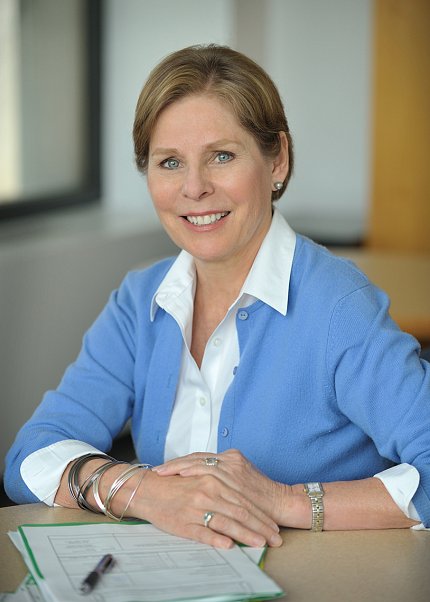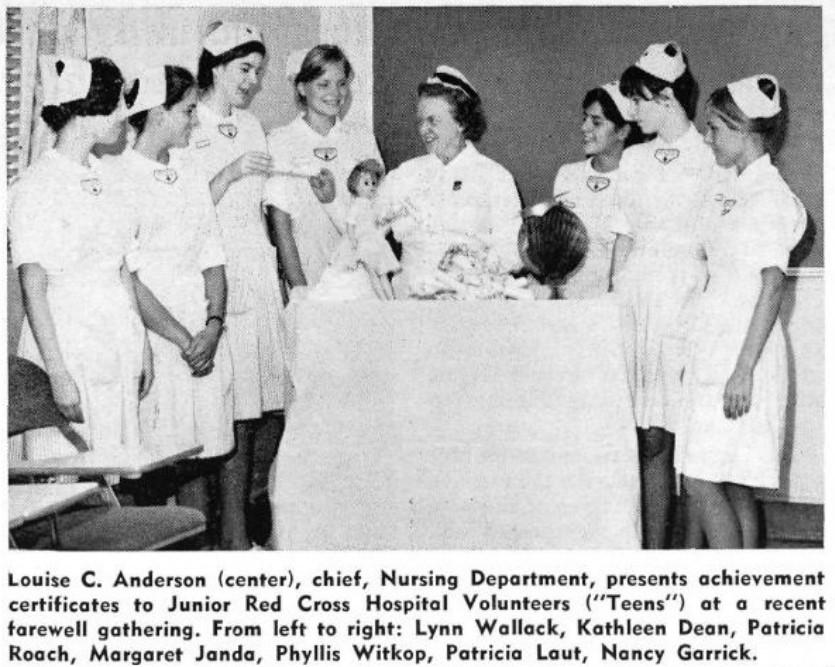NIAMS Communications Director Garrick Retires

NIAMS communications director Dr. Nancy Garrick retired after 28 years of NIH service. The former neuroscientist reflected on a fruitful NIH career, which started earlier than most.
Garrick recalls with fondness her first experience at NIH in 1968 as a teenaged candy striper at the Clinical Center. The volunteer gig seemed like a natural fit, given that medicine was a family affair.
“My father was a medic during World War II and then a hospital administrator, and my mother was a nurse,” said Garrick. “I had [medicine and science] in my blood. It was a big deal back then to be a candy striper and it was a lot of fun!”
Garrick originally intended to pursue a medical career, but finances did not allow for medical school. She knew she wanted a career in science but wasn’t sure what discipline to follow. So she spent some time exploring research careers in biology, biochemistry, physiology and pharmacology, before settling on neuroscience—a field that was exploding in the 1980s and was exciting to her.
“I wanted to really love the science before I pursued a Ph.D. in it,” she said, and neuroscience hit the mark for her.
Garrick began her formal NIH career in the NIMH Intramural Research Program (IRP), where she spent 13 years doing basic and preclinical research, first in the Clinical Neuropharmacology Branch and then in the Laboratory of Clinical Science, where she met her late husband, Dr. Dennis Murphy. Garrick then moved to the Office of AIDS Programs in the NIMH Extramural Research Program, where she served as program officer for the institute’s neuroimmunology portfolio on HIV/AIDS, which included five AIDS centers.
Garrick took a long break from NIH service in the 1990s and early 2000s to raise her daughter and serve in many volunteer roles at her daughter’s school and at church. But once an NIH’er, always an NIH’er, and the call to science remained in her blood.
In 2009, she returned to NIMH, this time as a science writer/editor in the NIMH Office of the Scientific Director, which at the time was headed by Dr. Richard Nakamura.
“I’d known Richard from when we were both IRP researchers,” she said.
Two years later, she had an opportunity to join the NIAMS Office of Communications and Public Liaison (now called the Science Communications and Outreach Branch), as its deputy chief. In 2016, she was named branch chief and communications director.

“I’ve always felt very fortunate to have spent almost my entire career at NIH, but also to have such a full and varied experience working in the IRP, in extramural and in the NIAMS Office of the Director,” Garrick reflected.
The different roles afforded her a unique breadth of institutional knowledge and a holistic perspective on the needs of the agency. Between Garrick and Murphy, who passed away in 2017, they gave more than 78 years of service to NIH.
When asked what she is most proud of, Garrick notes that she has always strived to give back—to support colleagues and staff in their careers and to help them succeed and advance.
“Like Dennis, [who was well known for guiding young investigators], I took mentoring very seriously because I felt like I myself had been well mentored,” she said. “The NIH family has supported me through so many tough times. I have such a high regard for the agency and for virtually everyone I’ve ever worked with.”
Garrick sums up her long career with satisfaction: “If you’re going to be a civil servant, it’s such a privilege to do it in the context of advancing medical research. It’s the epitome of what public service means.”
